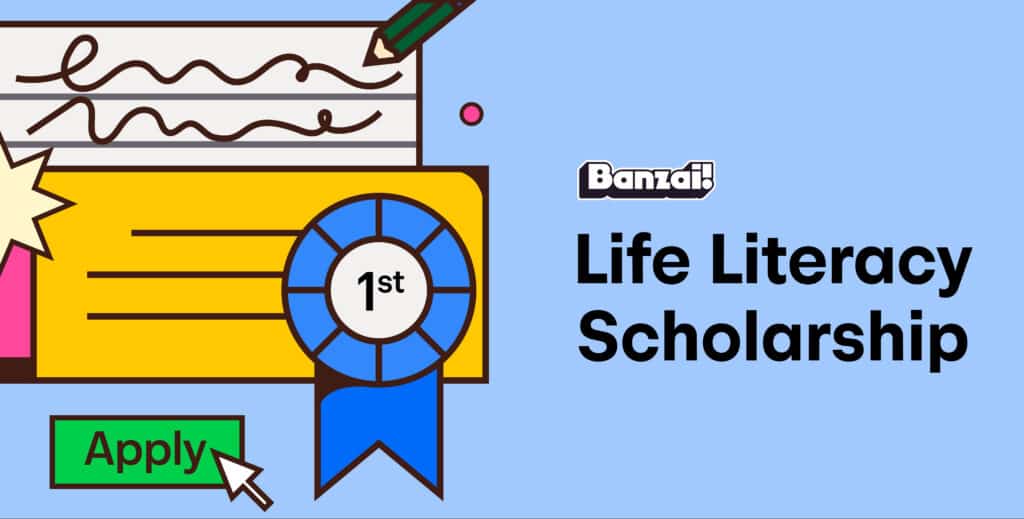Women face challenges in their higher education journey and career.
Women outnumber men on college campuses and soon will represent the majority of the U.S. college-educated workforce. But the gender gap is still far from closing. Furthermore, many women, including low-income women, minority women, older women, and women with children, face major financial, institutional, and situational barriers to earning a degree.
Many organizations have recognized the unique challenges women face and have sought to redress these challenges through women-only scholarships.
We highlight some of the best scholarships for women here.
The Hyundai Women in STEM Scholarship
Hyundai is accepting applications for its Hyundai Women in STEM Scholarship.
The company will award five scholarships of $10,000 each.
To apply, those interested must write an essay of 500 words or more on how EV tech can help create a more sustainable future.
Application Deadline: June 30, 2024
Award: $10,000 each (5 awards)
Eligibility:
- Must be high school seniors and current undergraduate students in accredited U.S. colleges and universities
- Must identify as female
- Must reside in the United States
- Must wish to pursue a STEM-related field of education
Click here to apply for the Hyundai Women in STEM Scholarship.
Science Ambassador Scholarship
Amount: Full Tuition (for up to 4 years). About: The Science Ambassador Scholarship is a…
Completing the Dream Scholarship Program
Amount: $2,500. About: Launched in partnership with the Thurgood Marshall College Fund, the Sallie Mae…
Bridging the Dream Scholarship Program for High School Seniors
Amount: $10,000. About: In 2021, the Sallie Mae Fund partnered with the Thurgood Marshall College…
Bridging the Dream Scholarship for Graduate Students
Amount: $10,000. About: In 2021, the Sallie Mae Fund partnered with the Thurgood Marshall College…
Patsy Takemoto Mink Foundation Education Support Awards
Amount: Up to $5,000. About: The Patsy Takemoto Mink Foundation, named for the trailblazing Japanese…
LMJ Scholarship
Amount: $10,000. About: The Minority Corporate Counsel Association (MMCA), an organization that promotes the hiring…
Linly Heflin Scholarship
Amount: $9,000. About: Linly Heflin is an organization that funds scholarships for women in Alabama…
Chevron Dinah Shore Scholarship
Amount: $5,000. About: Administered by the Ladies Professional Golf Association (LPGA), the Chevron Dinah Shore…
American Legion Auxiliary Spirit of Youth Scholarship for Junior Members
Amount: $5,000. About: The American Legion Auxiliary, an organization representing the spouses, mothers, daughters, granddaughters,…
Spirit of Youth Scholarship for Junior Members
Amount: $2,500-$5,000. About: Administered by the American Legion Auxiliary (ALA), the Spirit of Youth Scholarship…
ICSC Undergraduate Scholarship for Women
Amount: $5,000. About: The International Council of Shopping Centers (ICSC) Undergraduate Scholarship for Women is…
ICSC Undergraduate Diversity Scholarship
Amount: $5,000 (renewable for sophomores and juniors). About: The International Council of Shopping Centers (ICSC)…
Federal Realty Undergraduate Diversity Scholarship
Amount: $5,000 (renewable for sophomores and juniors). About: Offered by the International Council of Shopping…
Knowbe4 Women in Cybersecurity Scholarship
Amount: Up to $13,000. About: Administered by the Center for Cyber Safety and Education and…
Octillo Women’s Cybersecurity Scholarship
Amount: $4,000. About: Administered by the Center for Cyber Safety and Education, the Octillo Women’s…
Raytheon Intelligence & Space Underrepresented Minorities in Cybersecurity Scholarship
Amount: $10,000. About: Administered by the Center for Cyber Safety and Education, the Raytheon Intelligence…
ISC2 Women’s Scholarships
Amount: $1,000-$5,000. About: The ISC2 Women’s Scholarships are annually awarded to female students pursuing careers…
Goldman Sachs MBA Fellowship
Amount: $35,000 + Summer Associate salary. About: Global financial institution Goldman Sachs offers a fellowship…
Esther Edwards Graduate Scholarship
Amount: $5,000. About: The Esther Edwards Graduate Scholarship is one of several scholarships offered by…
Georgia Harkness Scholarship
Amount: $5,000. About: The Georgia Harkness Scholarship is one of several scholarships offered by the…
Leslie Andree Hanna Medical Scholarship
Amount: $5,000. About: Offered by the Daughters of the American Revolution (DAR), the Leslie Andree…
Charleston Women in International Trade (CWIT) Scholarship Program
Amount: $3,000. About: Charleston Women in International Trade (CWIT), an organization that promotes female international…
Eileen Kraus Scholarship
Amount: $5,000. About: The Eileen Kraus Scholarship, established in 2016 in partnership with Kaman Corporation,…
Army Women’s Foundation Legacy Scholarship
Amount: $1,000-$3,000. About: The Army Women’s Foundation offers annual scholarships to help current and past…
Lynn G. Bellenger Scholarship
Amount: $5,000. About: The American Society of Heating, Refrigerating, and Air-Conditioning Engineers (ASHRAE) offers five…
Gertrude M. Cox Scholarship
Amount: $1,000. About: Offered by the American Statistical Association (AMS), the Gertrude M. Cox Scholarship…
AIAA Lockheed Martin Marillyn Hewson Scholarship
Amount: $10,000. About: The American Institute of Aeronautics and Astronautics (AIAA) offers the AIAA Lockheed…
AFCEA Undergraduate Diversity Scholarship
Amount: $3,000. About: The Armed Forces Communications and Electronics Association (AFCEA) annually offers the AFCEA…
Ralph W. Shrader Graduate Diversity Scholarship
Amount: $3,000. About: Offered by the Armed Forces Communications and Electronics Association (AFCEA), the Ralph…
AAUW International Fellowships
Amount: $18,000-$30,000. About: The AAUW International Fellowships provides support for women pursuing full-time graduate and…
AAUW International Project Grants
Amount: $5,000-$7,000. About: The American Association of University Women (AAUW) offers grants to alumni of…
WWIN Star Scholar
Amount: Up to $5,000 per year (for 4 years). About: The Washington Women In Need…
Harriet Fitzgerald Scholarship for Women
Amount: $10,000. About: Each year, The Sunflower Foundation awards the Harriet Fitzgerald Scholarship to a…
Society of Women Engineers Scholarships
Amount: Varies. About: The Society of Women Engineers (SWE) offers scholarships to women studying toward…
Southern Automotive Women’s Forum Scholarship
Amount: $1,000-$5,000. About: The Southern Automotive Women’s Forum (SAWF) Scholarship is offered to women who…
Georgia McHugh Scholarship
Amount: $5,000. About: Offered by Soroptimist International of San Francisco, the Georgia McHugh Scholarship Program…
Jeannette Rankin National Scholar Grant
Amount: Up to $2,500 per year (renewable for up to 5 years). About: The Jeannette…
Professional Businesswomen of California Scholarship for Young Women
Amount: Up to $15,000. About: Each year, the Professional Businesswomen of California group gives a…
Nancy Fletcher Leadership Scholarship
Amount: $5,000. About: The Nancy Fletcher Leadership Scholarship is one of seven named scholarships in…
NYWICI Scholarship
Amount: $2,500-$10,000. About: Administered by the New York Women in Communications (NYWICI), the NYWICI Scholarships…
NSCS Scholarship for Women in STEM
Amount: $2,500. About: The National Society of Collegiate Scholars (NSCS) Scholarship for Women in STEM…
NEWH Women Leaders Scholarship
Amount: $5,000. About: The NEWH Women Leaders Scholarship, sponsored by Boutique Design Group, awards $5,000…
Gail Karp Orgell Scholarship
Amount: $7,000. About: Offered by the Jewish Community Federation and Endowment Fund, the Gail Karp…
Tiffany Green Operator Scholarship
Amount: $10,000. About: Offered by Live Nation and the House of Blues Music Forward Foundation,…
Denver Alumnae Chapter Scholarships
Amount: $1,500-$6,000. About: Each year, the Denver Alumnae Chapter of the Delta Sigma Theta sorority…
Daughters of the Cincinnati Scholarship
Amount: $16,000-$20,000 (disbursed over 4 years). About: Daughters of the Cincinnati offers annual renewable scholarships…
SWSIS Scholarships for Women Studying Information Security
Amount: Up to $10,000. About: The Computing Research Association Widening Participation (CRA-WP) and Applied Computer…
ConnectHER Film Festival Scholarship
Amount: $5,000. About: The annual ConnectHER film festival challenges young women from around the world…
Dissertation Fellowship in Women’s Studies
Amount: $5,000. About: Administered by the Woodrow Wilson National Fellowship Foundation, the WW Dissertation Fellowships…
Generation Google Scholarship (EMEA) – Women in Computer Science
Amount: 7,000 Euro. About: The Generation Google Scholarship for Women in Computer Science (Europe, Middle…
The scholarships listed above are just some of the best scholarships we’ve found for you. There are many other scholarships out there.
Use TUN’s Scholarship Search Engine to find more scholarships for you.
To keep on top of new scholarships as they are offered, be sure to join the TUN Community. We will let you know about scholarships that you qualify for.
When to apply for scholarships
Each scholarship has a specific deadline. These deadlines occur throughout the year, so you can find one for any time of the year. Keep in mind, however, that some scholarship deadlines may fall months, even a year, before the start of the academic year for which you’re seeking a scholarship.
So, if you’re a high school student looking to get a scholarship for your freshman year of college, you should start the search process early. While you don’t necessarily have to apply for scholarships in your freshman or sophomore year, you will develop a sense of scholarships that are available so you can apply when you’re ready.
If you’re a current college student, you should be looking for scholarships throughout the year. That way, if you find an award that appeals to you, you’ll be ahead of the game.
And when you apply, be sure to meet the deadline for each specific scholarship.
How to apply for scholarships
Each scholarships has its its own unique requirements and qualifications. The first step to successfully applying for any scholarship is reading the details carefully. Make sure that you fit the eligibility criteria and fill out the application completely.
Pay attention to what’s required of you. For example, if you need a recommendation letter, you should request one way ahead of time so you have one by the time you apply. If an essay is required, start writing weeks before the deadline so you have an essay you can be proud of before the due date.
Aim to send in your application at least a few days before the deadline. This way, you avoid the risk of getting sidelined by technical glitches, tests, heavy homework load, or illness.
And don’t forget to submit everything required of you as part of your application.
For more tips on how to apply for scholarships, check here.
How to find scholarships
Colleges may offer either merit-based or need-based scholarships or both. You can usually find most of the information by clicking on their “financial aid” page. If you have questions, don’t hesitate to email or call their financial aid office.
There are also outside scholarships — like the ones listed above — that are sponsored by companies, organizations, foundations, and individuals as a way to give back to their communities. The awards can cover your entire tuition or a portion of it. Some scholarships have a GPA requirement or are based on financial need, while others embrace a cause or emphasize community involvement, athletic achievement, diversity, passion, and much more.
So, how do you find outside scholarships like these?
Start your search with TUN’s Scholarship Search Engine to find scholarships that are ideal for you. You can search by grade level, GPA, major, state of residency, scholarship name, or deadline month. You can also browse through our featured scholarships, some available only through TUN, and a collated list of scholarships for specific groups of students.
You should also check with your high school or college to see if they have a list of scholarships. Your guidance counselor may have the list or point you to someone who can help you. They may also be in the know about scholarships sponsored by local stores or organizations.
Your family is yet another good source of scholarships. Your parents or guardians may work for a company that offers scholarships for dependents of employees.
If you work while in high school or college, you may also qualify for an employee scholarship.
For more tips on how to find scholarships, check here.
How to get scholarships
Scholarships, especially ones with high awards, can be very competitive. In some cases, you may be competing against thousands of students.
So, how do you increase your chances of winning a scholarship?
First, make sure you meet the eligibility criteria and submit all the information required of you, including recommendation letters, transcripts, and resume.
Second, be sure to distinguish yourself from the other applicants. Your essay, if that’s required, is what makes you unique so let your personality and creativity shine through. How do you do that?
You can achieve that “by showing instead of telling,” according to Sarah Chomette, an eAdviser with the College Advising Corps.
“When answering a creative prompt or inputting your personal statement, it’s important to provide the reader with a story instead of just telling them about your goals and accomplishments,” she said. “That can be kind of boring and it makes you get lost in the crowd.”
A successful essay must include four major components, Chomette explained. First, make sure that you convey your personal values. Second, be open and honest to help the reader feel a connection with you. Third, let the reader know why your story is important. Fourth, your writing must show that you put time and effort into it.
If a scholarship asks for a video or infographic instead of an essay, the same principle applies.
To summarize, always put thought and effort into your whole application and submit your best work. There should be no obvious errors or typos. And if you need to submit a recommendation letter, reflect on who knows you best and whose recommendation would help your application the most.
Are scholarships taxable?
Typically, scholarships are not taxable. However, it can depend on how the scholarship money is being used, according to federal tax laws.
Scholarship dollars are tax-exempt if they are going to a degree-seeking candidate and are being used to pay for tuition and fees required for enrollment, books, supplies, and other educational expenses.
Scholarships are not tax-exempt, and you must report them as “gross income,” if they are used to pay for room and board, travel, or optional equipment.
If you have additional questions, you should reach out to the financial aid office of your prospective or current college or university.
Featured Scholarships on TUN
In addition to the scholarships listed here, check our blog article on scholarships for women.








